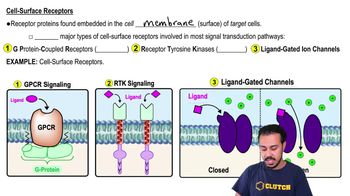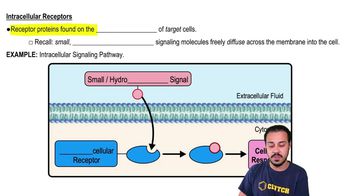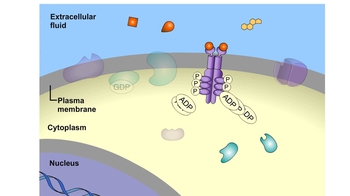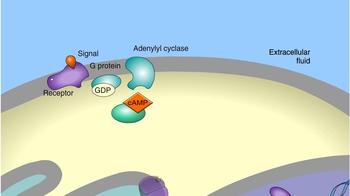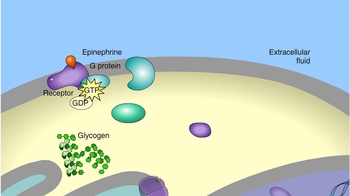10. Cell Signaling
Classes of Signaling Receptors
Learn with other creators
Practice this topic
- Multiple Choice
The molecules that convert extracellular signals into intracellular signals are:
a) Neurotransmitters.
b) Hormones.
c) Cell surface receptors.
d) Intracellular receptors.
- Multiple Choice
Which type of receptor leads directly to a change in the distribution of ions on opposite sides of the membrane?
a) Receptor tyrosine kinase.
b) G protein-coupled receptor.
c) Ligand-gated ion channel.
d) Steroid receptor.
e) Intracellular receptor.
- Multiple Choice
Why does testosterone, a lipid-soluble / hydrophobic signaling molecule, not affect all cells in the body but only specific cells?
a) Only target cells have the cell surface receptor able to bind with testosterone.
b) Only target cells contain the genes regulated by testosterone.
c) Only target cells possess the phosphorylation cascade uniquely activated by testosterone.
d) Only target cells possess the intracellular receptor able to bind with testosterone.
- Multiple ChoiceReceptors for signal molecules __________.
- Open QuestionLipid-soluble signaling molecules, such as aldosterone, cross the membranes of all cells but affect only target cells becausea. only target cells retain the appropriate DNA segments.b. intracellular receptors are present only in target cells.c. only target cells have enzymes that break down aldosterone.d. only in target cells is aldosterone able to initiate the phosphorylation cascade that turns genes on.
- Open QuestionSummarize the experimental evidence in sponges showing that animal cells adhere to each other selectively. Explain the molecular basis of selective adhesion.
- Open QuestionSuppose you have an antibody that binds to the receptor tyrosine kinase illustrated in Figure 11.16. When you add this antibody to the cell, you find that it activates the cell response, even when no signaling molecule is present. Explain this result.


